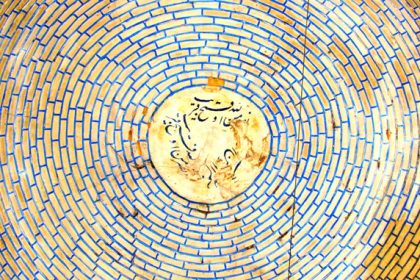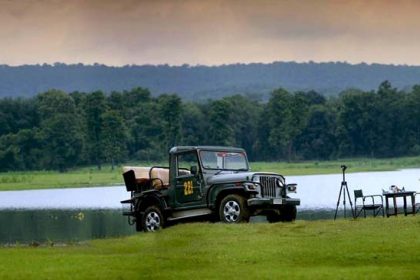Old Tehran has many stories from the past in its forgotten corners; Original and memorable attractions that still revive the mood of that era.
In the heart of modern Tehran, signs of the distant past are still hidden; Markets, coffee houses, houses and neighborhoods that remind of the glorious days of old Tehran. These forgotten attractions, with their special architecture and warm atmosphere, display the original history and culture of the capital, and visiting them can create a nostalgic and special experience for those interested in Tehran.
The old and forgotten bazaars of Tehran
Oudlajan bazaar is one of the most original and oldest bazaars in Tehran. This bazaar, which is located near Tehran’s Grand Bazaar, includes small rooms and shops in a traditional and pleasant atmosphere. In the old days, this was a place to buy and sell various goods and people from the surrounding neighborhoods came there to buy their daily necessities. Today, Oudlajan Bazaar, with major renovations, still welcomes visitors as an old bazaar, and in every corner you can feel the aroma of life in old Tehran. In addition, if you want to walk in the heart of Tehran and find traces of history in its back alleys, Odlajan neighborhood is an ideal destination. To reach this bazaar, you can use the Imam Khomeini subway and walk to the heart of Odlajan neighborhood in a few minutes.
Bazarche Oudlajan, photo source: Wikipedia, photographer: Mohammad Reza Banani
Qavam al-Douleh Bazaar is located in the center of the city and with its old cells, it still reminds of the atmosphere of traditional and bustling businesses of the past. This small bazaar, which is also known as Bazarche Shapur and Bazarche Tarkhani, was once one of the most important commercial centers of the city. Qawam al-Doula Bazaar was built during the Qajar era and was included in the list of national works of Iran in 2013. You can take the metro to Hassanabad station and walk a little to reach this bazaar.
Historical coffee houses
Azari coffee house or traditional Azari dining room, near the railway square, is a place that brings you the feeling of the past decades. This place is one of the few traditional coffee houses in Tehran, which with its traditional decoration, narrow-waisted tea glasses and old architecture, provides an original atmosphere for those interested in Iranian culture and rituals. This coffee house is still a frequent place for people who want to drink tea in a warm and intimate environment away from the hustle and bustle of the city and enjoy the taste of a great daisy. To access this place, just take the subway or bus to Railway Square and find it with a short walk.

Azari coffee house, photo source: Google Map, photographer: Houshidar Ildari
Haj Ali Darvish coffee house, which is considered the smallest coffee house in the world, is located in one of the corridors of Tehran’s Grand Bazaar. This small and cozy coffee house in 1395 It was registered in the list of national works of Iran. With an area of about two square meters, it has become an attractive place for old tea drinkers and regular customers of the market. The history of this coffee house reaches more than 100 years and it still hosts passers-by and regular customers as a nostalgic place full of memories. To reach it, you can enter Grand Bazaar and then Zargarha Row and ask the vendors about Haj Ali Darwish Coffee House to find it easily.
Historical and less known neighborhoods
Sangalj neighborhood is one of the oldest and most historical neighborhoods in Tehran, which still preserves its alleys and traditional houses with central courtyards and brick walls. Among the attractions of this neighborhood, we can mention Mustofi-ul-Mamalek’s house, Surp Georg church (Holy Georg), Sangalj auditorium, Shahr Park and Sheikh Fazlullah’s house. To access Sangalj, you can get off at Hassan Abad, Imam Khomeini or Khayyam metro station and walk or take a taxi to this neighborhood.

Mostofi al-Mamalek’s house in Sangalj, photo source: Wikipedia, photographer: GTVM92
Old Lalezar was once a lively street and the cultural and entertainment center of Tehran. During the Qajar and Pahlavi periods, this street hosted cinemas, cafes and stylish and modern stores of its time; But with the passage of time and urban changes, the glory of Lalezar began to decline and many of its buildings were forgotten. Today, by crossing this street, you can easily realize its proud past. The old Lalezar is located between Topkhaneh Square and Jomohri Street and is still a must-see for those interested in old architecture and culture of Tehran.
Historical houses and old mansions
Masoudiyeh mansion remains from the Qajar period and is considered one of the famous historical buildings of Tehran. This mansion with traditional bricks, beautiful stucco and large courtyards represents the Iranian-Islamic art and architecture of its period. In the past, Masoudiya was a place for political meetings and was considered one of the bases of constitutionalists and opponents of Mohammad Ali Shah. The said mansion is located near Baharestan Square and upon entering this mansion, you will travel to a distant past.

Masoudiya mansion, photo source: Kojaro, photographer: Alireza Kikha
Moghadam House is located on Imam Khomeini Street and is considered one of the historical and beautiful houses of Tehran. This Gujri house functions as a museum due to its special architecture and old objects and decorations. The owner of this house, Mohsen Moghadam, was one of the professors of Tehran University and collected many historical works of Iran in his house. Visiting this house museum will introduce you to the history and art of Iran.
Cultural buildings and old theaters
In the not-so-distant past, Tehran’s theaters and cultural halls were hangouts for artists, writers and art lovers and played an essential role in the cultural flow of the city. Among these old buildings, Nasr Theater and Grand Hotel on Lalezar Street are among the most well-known. The Grand Hotel, which was built at the end of the Qajar period, was a place for theater performances, poetry readings, singing and holding cultural events, and at that time it was known as one of the most modern cultural centers in Tehran. However, today it is in ruins.

Nasr Theater, photo source: Google Map, photographer: Mehsa Mohaq
Nasr Theater, which belongs to the late Qajar period, became a prominent center for performing arts during the Pahlavi period, and many prominent Iranian artists performed in this hall. Today, this building is being renovated to be used as a theater and museum. This place provides a pure opportunity for those interested in art and history to get to know the cultural atmosphere of old Tehran.
Forgotten historical baths
Hammam Nawab and Hammam Khanam are historical and little-known baths in Tehran, each of which has its own unique architecture and stories. Hamam Nawab, which is located in Imamzadeh Yahya neighborhood, dates back to the Qajar period and owes its fame largely to the movie Qaiser, which was one of the locations of this famous movie.

Hammam Nawab, photo source: Google Map, photographer: Mona Mashkoori
Qibla bath, also known as Hamam Khanum, is located in one of Tehran’s old alleys, and with its small and pleasant atmosphere, it takes visitors to the distant past. When public baths were the center of local interaction and conversation.
Little known old gardens and parks
In the middle of the bustle of Tehran, there are old gardens and parks that still have a special place in the old memories of the city with their old trees and pleasant atmosphere. Ferdows Garden is one of these old gardens that was built in the Qajar period and was used as a residence and recreation place for princes and elders. This garden, with its calm atmosphere and water features, is still one of the pleasant spots in the city for recreation and sightseeing.

Ferdows Garden, photo source: Google Map, photographer: Behrang Moulai
Bagh Nagaristan, which was built during the period of Feth Ali Shah Qajar and was used as a resting place for the royal family, today hosts visitors who are interested in history and nature. These gardens, which have received less attention from the general public, are a green and nostalgic environment for experiencing peace and discovering the history of Tehran.
Mosques and historical religious places
Old Tehran was full of mosques and religious places, each of which, with its own architecture and history, narrates the beliefs and lives of the people of that time. Sepahsalar Mosque, or Martyr Motahari Mosque and High School, which is one of the largest mosques in Tehran, was built in the Qajar period, and with its magnificent architecture and extraordinary tile decorations, it is still considered a symbol of the magnificence of Islamic-Iranian art. Imamzadeh Yahya, which is located in one of the old neighborhoods of Tehran, is one of the important religious places of the capital. This Imamzadeh, with its spiritual and relaxing atmosphere, is still attracting the attention of pilgrims and those interested in history and religious architecture. Visiting these places is an opportunity to understand the spiritual and cultural depth of Tehran and to know more about its religious and historical identity.

Sepahsalar Mosque, photo source: Google Map, photographer: Behzad Handi
Visiting the forgotten attractions of Tehran is an opportunity to travel deep into history and touch the precious relics of this old city from the hustle and bustle of modern life. These places are not only narrating the culture and life of the past, but also have an unbreakable link with the identity of Tehran and its people, and as a window to the glorious days of the capital, they are worth watching again.
Cover photo source: Google Map, photographer: Raha Dehkharghani (Mostofi Al-Mamalek house)
RCO NEWS


















